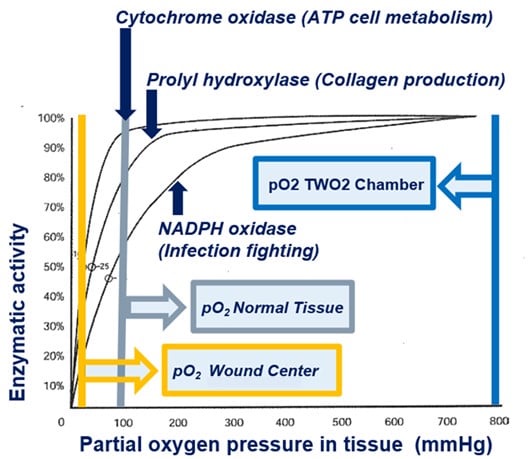Wound-healing complications are a significant concern for individuals with diabetes, often leading to chronic ulcers and infections. In recent years, topical hyperbaric oxygen therapy (THOT) has emerged as a promising intervention for enhancing wound healing in diabetic patients. By harnessing the healing properties of oxygen under increased pressure, THOT offers a non-invasive and practical approach to managing diabetic wounds. This article explores the mechanisms behind THOT, its role in wound care for diabetic patients, and its potential to revolutionize diabetic wound management.
Understanding Diabetic Wound Healing:
Diabetes mellitus, a metabolic disorder characterized by impaired insulin function, poses a substantial risk to wound healing and diabetes. Elevated blood sugar levels in diabetic individuals lead to various complications, including reduced blood flow, nerve damage (neuropathy), and compromised immune function. These factors contribute to chronic wounds, particularly in the lower extremities, prone to pressure ulcers and infections.
Conventional wound care approaches often involve debridement, antibiotics, and dressings to promote healing. However, these methods may not address poor tissue oxygenation and impaired microcirculation in diabetic wounds. This is where topical hyperbaric oxygen therapy comes into play.
The Mechanism of Topical Hyperbaric Oxygen Therapy:
Topical hyperbaric oxygen therapy involves the administration of oxygen at increased atmospheric pressure directly to the wound site. Unlike systemic hyperbaric oxygen therapy, which involves full-body pressurization in a hyperbaric chamber, THOT targets specific wounds, delivering oxygen directly to the affected tissue.
Applying hyperbaric oxygen creates a hyperoxic environment within the wound, serving multiple therapeutic purposes. Firstly, oxygen is essential for cellular metabolism and the production of adenosine triphosphate (ATP), the energy currency of cells. By supplying oxygen directly to the wound bed, THOT enhances cellular metabolism, promoting the proliferation and migration of fibroblasts and keratinocytes, critical players in the wound healing process.
Furthermore, oxygen has antimicrobial properties, inhibiting the growth of anaerobic bacteria commonly found in chronic wounds. By reducing bacterial load and promoting tissue oxygenation, topical hyperbaric oxygen wound therapy creates a more favorable environment for wound healing.
Oxygen wound therapy creates a more favorable environment for wound healing.
Clinical Efficacy and Applications:
Research studies have demonstrated the efficacy of topical hyperbaric oxygen therapy in promoting wound healing in diabetic patients. Clinical trials have shown significant improvements in wound size reduction, healing rates, and infection control following THOT interventions. Moreover, THOT has been found to enhance angiogenesis, the formation of new blood vessels, which is crucial for restoring adequate blood flow to the wound site.
THOT is versatile and can be applied to various types of diabetic wounds, including diabetic foot ulcers, venous ulcers, and pressure ulcers. Its non-invasive nature and minimal side effects make it a suitable adjunctive therapy from Advanced Oxygen Therapy Inc for diabetic patients with chronic wounds resistant to conventional treatments.
Future Directions and Challenges:
Despite its promising results, several challenges remain in the widespread adoption of topical hyperbaric oxygen therapy. Accessibility to THOT facilities, cost considerations, and the need for further research to optimize treatment protocols are among the key hurdles. Additionally, ensuring proper wound assessment and patient selection is essential to maximize the benefits of THOT while minimizing risks.
Future research efforts should focus on elucidating the optimal parameters for THOT, including pressure levels, duration of treatment, and frequency of sessions. Moreover, exploring the potential synergies of THOT with other wound care modalities, such as advanced dressings and growth factors, could further enhance its therapeutic efficacy.
Conclusion:
Topical hyperbaric oxygen therapy holds immense promise as a novel approach to diabetic wound care. By addressing the underlying issues of tissue hypoxia and bacterial colonization, THOT accelerates the wound-healing process and reduces the risk of complications in diabetic patients. As research continues to advance, THOT has the potential to revolutionize diabetic wound management, offering hope for improved outcomes and quality of life for millions affected by this debilitating condition.
For more information about wound care, tap to Advanced Oxygen Therapy Inc. for the best treatment for diabetic disease or ulcers.


No comments yet